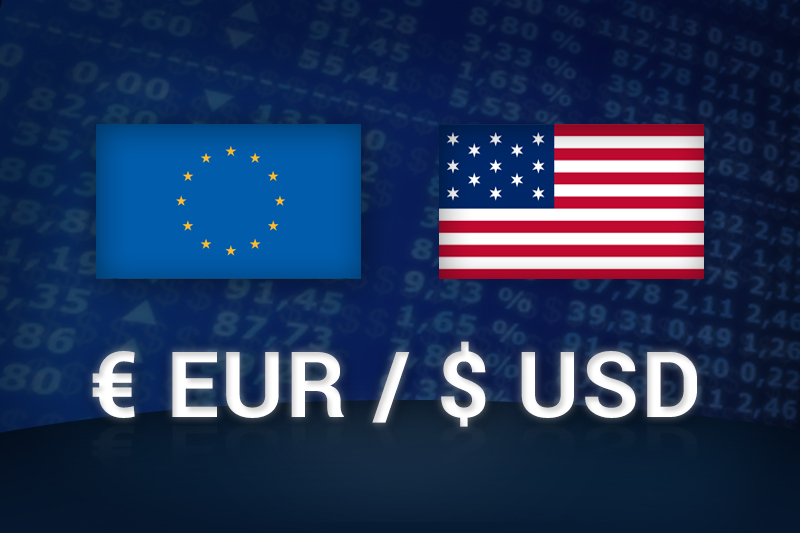Investing.com - The euro rose in Asian trading on Tuesday as investors ditched dollar positions on news June retail sales came in much weaker than expected.
In Asian trading on Tuesday, EUR/USD was trading up 0.24% at 1.2301, up from a session low of 1.2266 and off from a high of 1.2313.
The pair was likely to find support at 1.2245, the low from July 15, and resistance at 1.2334, the high from July 10.
Weak June retail sales out of the U.S. served as the chief market driver.
The Commerce Department reported U.S. retail sales dropped by a seasonally adjusted 0.5% in June, far worse than market calls for a 0.2% gain.
The dismal numbers came in wake of a 0.2% decline in May, marking the first time retail sales had dropped in three consecutive months since late 2008.
Core retail sales, which are stripped of automobile sales, contracted for the second consecutive month, dropping 0.4%, defying market expectations for a gain of 0.1%, after falling by 0.4% in May.
Consumer spending accounts for roughly 70 percent of total U.S. economic output, and soft retail sales disappointed markets, especially in wake of a weak June jobs report and sluggish consumer sentiment numbers.
The data served as the latest economic indicator to suggest the Federal Reserve will stimulate the economy via purchasing bonds held by banks, injecting the economy with liquidity in the process that weakens the dollar in exchange for a more robust economy.
Investors sold the dollar in anticipation of Federal Reserve Chairman Ben Bernanke's appearance before Congress later Tuesday to discuss the monetary policy, with investors hoping for more clarity over Fed stimulus.
Investors largely shrugged off stronger-than-expected manufacturing data out of New York state.
The Federal Reserve Bank of New York reported earlier that its "Empire State" general business conditions index rose to 7.4 in July from 2.3 in June, beating out economists' calls for a reading around 4.0.
Eurozone inflation rates, meanwhile, met expectations, with the consumer price index growing 2.4% on year in June, in line with market estimates and unchanged from May.
The euro, meanwhile, was up against the pound and up against the yen, with EUR/GBP up 0.03% at 0.7851 and EUR/JPY trading up 0.29% at 97.07.
Later Tuesday, the pair will move when the ZEW Institute releases reports on economic sentiment in Germany and the eurozone area as a whole.
Also on Tuesday, the U.S. will publish its latest consumer price index as well as reports on the capacity utilization rate and industrial production.
Federal Reserve Chairman Ben Bernanke will testify on the U.S. central bank’s monetary policy decisions before the Senate Banking Committee in Washington.
In Asian trading on Tuesday, EUR/USD was trading up 0.24% at 1.2301, up from a session low of 1.2266 and off from a high of 1.2313.
The pair was likely to find support at 1.2245, the low from July 15, and resistance at 1.2334, the high from July 10.
Weak June retail sales out of the U.S. served as the chief market driver.
The Commerce Department reported U.S. retail sales dropped by a seasonally adjusted 0.5% in June, far worse than market calls for a 0.2% gain.
The dismal numbers came in wake of a 0.2% decline in May, marking the first time retail sales had dropped in three consecutive months since late 2008.
Core retail sales, which are stripped of automobile sales, contracted for the second consecutive month, dropping 0.4%, defying market expectations for a gain of 0.1%, after falling by 0.4% in May.
Consumer spending accounts for roughly 70 percent of total U.S. economic output, and soft retail sales disappointed markets, especially in wake of a weak June jobs report and sluggish consumer sentiment numbers.
The data served as the latest economic indicator to suggest the Federal Reserve will stimulate the economy via purchasing bonds held by banks, injecting the economy with liquidity in the process that weakens the dollar in exchange for a more robust economy.
Investors sold the dollar in anticipation of Federal Reserve Chairman Ben Bernanke's appearance before Congress later Tuesday to discuss the monetary policy, with investors hoping for more clarity over Fed stimulus.
Investors largely shrugged off stronger-than-expected manufacturing data out of New York state.
The Federal Reserve Bank of New York reported earlier that its "Empire State" general business conditions index rose to 7.4 in July from 2.3 in June, beating out economists' calls for a reading around 4.0.
Eurozone inflation rates, meanwhile, met expectations, with the consumer price index growing 2.4% on year in June, in line with market estimates and unchanged from May.
The euro, meanwhile, was up against the pound and up against the yen, with EUR/GBP up 0.03% at 0.7851 and EUR/JPY trading up 0.29% at 97.07.
Later Tuesday, the pair will move when the ZEW Institute releases reports on economic sentiment in Germany and the eurozone area as a whole.
Also on Tuesday, the U.S. will publish its latest consumer price index as well as reports on the capacity utilization rate and industrial production.
Federal Reserve Chairman Ben Bernanke will testify on the U.S. central bank’s monetary policy decisions before the Senate Banking Committee in Washington.
